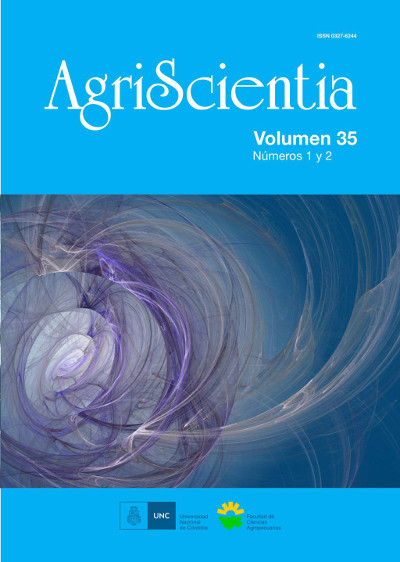Crop yield estimation using satellite images: comparison of linear and non-linear models
Contenido principal del artículo
Resumen
Development of models for crop yield prediction using remote sensing allows accurate, reliable and timely estimations over large areas. articularly, this information is necessary to ensure the adequacy of a nation’s food supply as well as to aid policy makers and farmers. In Argentina, soybean (Glycine max (L.) Merr.) and corn (Zea mays L.) are the most important crops. The goal of this research was to develop and evaluate linear and non-linear models to estimate crop yield from satellite data. Particularly, we proposed and applied those models to obtain soybean and corn yield in the central region of Córdoba (Argentina) using Landsat and SPOT images. The models were designed taking into account all or some bands included in the images from one or both satellites. Results showed that models provided a good fit when all images are used, being superior the accuracy obtained by neural networks (NN). For soybean, the best estimation presented a coefficient of determination equal to 0.90 with NN and 0.82 with multiple linear regression models, and for corn 0.92 and 0.88, respectively. This study concludes that Landsat and SPOT images can be effectively used to predict, in early to mid-season crop growth stages, corn and soybean yield.

